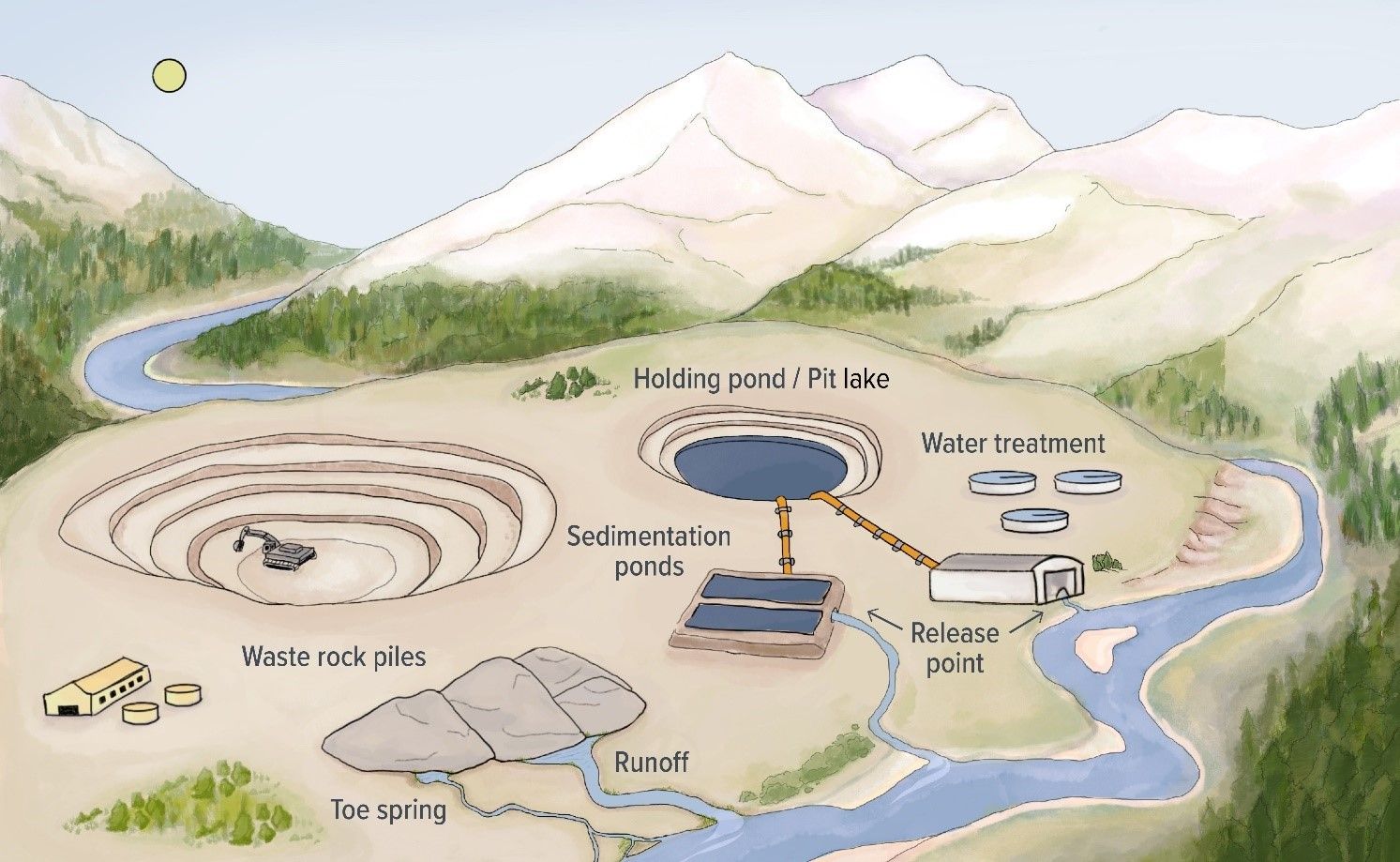National guidelines recommend that the concentration of selenium be no greater than 1 µg/L in freshwaters.
What is it?
Selenium is a naturally-occurring element in many different kinds of minerals, especially those associated with sedimentary rocks, shale, coal and phosphate deposits. Selenium-containing minerals are often found in rocks that contain commonly mined metals like copper, zinc and lead.
Selenium does not break down in the environment and accumulates in living organisms. In water, selenium takes different forms, including selenate (SeO4), selenite (SeO3), and organic selenium forms. Selenium often becomes incorporated into the sediment at the bottom of lakes and rivers, and can be released back into the water depending on how much oxygen is available and the presence of other elements.

The release of selenium to surface waters can be greatly increased by human actions, especially from coal and metal mining (including waste rock piles), coal ash and emissions at coal-fired power plants, metals mining and refining, and from irrigation where soils are selenium-rich.
Why does it matter?
Selenium is toxic to aquatic organisms, including fish, and the birds and animals that eat them. High concentrations of selenium in drinking water can also be toxic to humans.
Selenium accumulates in the tissues of organisms over time, which is referred to as bioaccumulation. This happens more readily in slow moving streams, lakes and wetlands compared with fast moving rivers (although it does occur in both).
The form that selenium takes in water is influenced by the amount of oxygen available, as well as the presence of other elements. Microbes (tiny organisms, like bacteria) can convert inorganic selenium to organic forms. Organic forms of selenium are more toxic to fish and bugs because they are more easily absorbed (or bioavailable).

Selenium can cause deformities in fish and tends to concentrate in the reproductive organs, including ovaries and eggs. It can impair fish reproduction and impair growth and development of young fish.
How is it measured?
Selenium is measured in water and sediment samples sent to a laboratory for analysis, often as part of a “metals suite” that measures multiple elements.
In water, the relative amount of selenium associated with particles can be determined by comparing filtered (dissolved) and unfiltered (total) sample results. Selenium can also be measured in fish tissues and in other aquatic organisms.
Selenium is influenced by: pH, dissolved oxygen and oxidation-reduction potential can influence the form and therefore the toxicity of selenium.